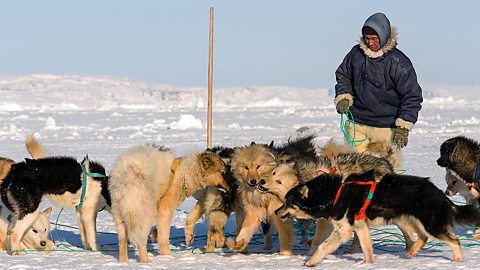What do you know?
What are biomes?
Biomes are large-scale ecosystems. The surface of the Earth can be divided according to biomes.
Key points
- Biomes are large-scale ecosystemThe living organisms in a particular area (such as plants and animals), together with the non-living components of the environment (such as rocks and soil).. Examples of biomes include tropical rainforests, hot deserts, deciduous forests, boreal (taiga) forests and tundra.
- The location of global biomes is determined by several factors, including latitude, altitude, continentalityThe difference between climates that are located within landmasses and those that are located close to large bodies of water. and ocean currents.
What are biomes?
The surface of the Earth can be divided according to biomes.
Tropical rainforest
Tropical rainforests are found between the Tropics of Tropic of CancerAn imaginary line that runs parallel to the Equator at 23.5° north. and Tropic of CapricornAn imaginary line that runs parallel to the Equator at 23.5° south., 23.5° north and south of the equatorAn imaginary line that runs around the Earth. The equator marks the dividing line between the Northern and Southern hemispheres.. These dense forests grow in hot, wet conditions and a wide range of animals, such as monkeys, jaguars and parrots, live here.Boreal (taiga) forests
Cold environments, where precipitationAny moisture that falls from the clouds, such as snow, rain, hail and sleet. often falls as snow. Evergreen coniferous trees, often with needles and cones, grow here. Moose, bears, lynx and wolves live in these forests.Hot desert
Dry areas with sparseWhen something is in short supply, for example sparse vegetation means that very few plants are growing. vegetation, commonly found along the Tropics of Cancer and Capricorn. succulentPlants found in dry arid climates that are able to store water in leaves, stems or roots. plants, such as cacti, and many types of reptiles and insects are found here.Tundra
Cold, dry climates found almost entirely in the far north of the planet. Permafrost prevents trees from growing, but low-lying plants such as mosses thrive. Reindeer and Arctic foxes live here.Deciduous forests
Temperate climates, which means that they are not too hot or too cold. Trees such as oak and elm that lose their leaves during cooler months grow here. Animals such as owls, red deer and badgers live in these forests.
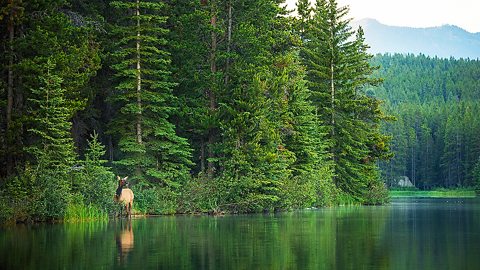
How different species have adapted to live in the Arctic tundra
Question
Which biome do reindeer live in?
Reindeer live in the tundra in the cold Arctic regions of North America and Eurasia.
Why do global biomes vary?
The characteristics of global biomes are determined by several factors.
latitudeImaginary lines that run east to west around the Earth, parallel to the Equator or 0° latitude. They can be measured in degrees (°).
Biomes closer to the equatorAn imaginary line that runs around the Earth. The equator marks the dividing line between the Northern and Southern hemispheres. are hotter as the sun’s radiation is more concentrated here due to the curvature of the Earth. Biomes closer to the poles are therefore colder. The global atmospheric circulationThe pattern in which air moves across the planet. Global atmospheric circulation is split into six cells; two Hadley cells, two Ferrel cells and two Polar cells. of air evens out this difference in temperature. The movement of air in part of this air circulation, known as the Hadley Cell, is responsible for the moist air that rises at the equator and the dry air that falls over the Earth’s deserts.
altitudeThe height of the land, measured in relation to sea level.
Higher land is cooler and wetter. There is a decrease in air temperature of around 0.6 to 0.7 °C for every 100 m gained in height. Cold mountain or alpine biomes are found at high altitude, even along the equator.
continentalityThe difference between climates that are located within landmasses and those that are located close to large bodies of water.
The sea retains heat during colder months, but remains cool during warmer months. Places closer to the sea have milder and often wetter biomes than those inland. This can be seen with the more moderate temperatures experienced along the coastline of south-western Europe.
Ocean currents
Warm ocean currents bring milder temperatures and higher precipitationAny moisture that falls from the clouds, such as snow, rain, hail and sleet.. Cold ocean currents bring cooler temperatures and lower precipitation. A cold ocean current flowing along the south-west coast of Africa created the Namib desert.
Question
Which biome is found at high altitudes?
The climate at high altitudes is usually cooler and wetter. Mountain or alpine biomes are found at high altitudes.
What is climate?
The global atmospheric circulation system determines many climates.
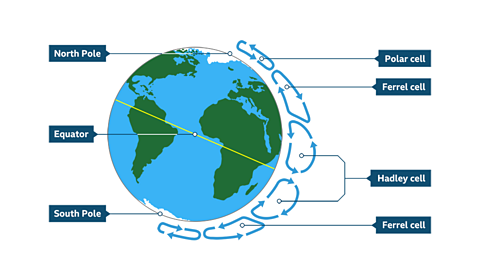
Image caption, Global atmospheric circulation
The movement of air across the planet occurs in a specific pattern. The whole system is driven by the Equator, which is the hottest part of the Earth. Air moves in six large cells: three in the Northern Hemisphere and three in the Southern Hemisphere. The cells have names: the Hadley cells, the Ferrel cells and the Polar cells.
Image caption, Global atmospheric circulation
Air rises at the Equator. Rising air leads to rainfall. The rising air eventually reaches the edge of the atmosphere. It cannot go any further and so it travels to the north and south. This movement forms part of the Hadley cell.
Image caption, Global atmospheric circulation
The air becomes colder and falls back towards the Earth at around 30° north and south of the Equator. This is the point where the Hadley cell and Ferrel cells meet. Falling air is usually dry.
Image caption, Global atmospheric circulation
Air rises again at around 60° north and south and falls again around 90° north and south. This is where the Polar cell lies. Rainy parts of the world are found wherever air rises and dry parts of the world are found wherever air falls.
1 of 4
Factors that determine the climate of a country and the five main climate zones of the world
Climate describes an average of weather conditions in an area over a period of time, usually around thirty years.
There are many different factors that determine the climate of a place, like…
Distance from the Equator: the curve of the Earth means that places furthest from the Equator - like the North and South Poles – are less exposed to the sun’s heat, while those closer to the Equator receive more direct, intense heat.
Elevation: how high or low an area is, as temperature decreases the higher you go.
Distance from the sea: areas by the coast tend to be cooler in summer and warmer in winter because they are cooled and warmed by ocean currents and water holds its temperature for longer.
Vegetation: the release of water vapour as part of photosynthesis impacts on cloud formation so areas like rainforests are very wet.
The world has five main climate zones.
Polar climates are cold and dry with long, dark winters and short summers. Temperatures rise above freezing for only a few months each year.
Temperate climates, like ours in the United Kingdom, have four clear seasons with warm summers, if we're lucky, and cool winters.
Arid climates are found in desert areas like the Sahara, and are hot and dry all year round. They usually receive less than 250mm of rainfall each year.
Tropical climates are found in places like the Amazon rainforest and have hot temperatures all year round with two seasons, one wet and one dry.
And a Mediterranean climate has hot, dry summers and mild winters.
The climate is something that affects us all, from our economy, to the food we eat, to our leisure activities.
Question
What type of climate is found where air rises?
Rising air usually leads to rainfall and so wet climates are found where air rises. Air rises along the equator and at 60° north and south of the equator.
Test your knowledge
Play the Planet Planners game! gamePlay the Planet Planners game!
Make decisions for the planet in this KS3 geography game.

More on Global biomes
Find out more by working through a topic
- count2 of 5

- count3 of 5
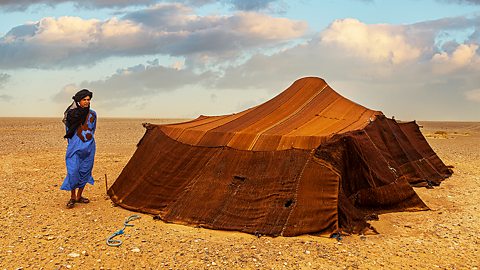
- count4 of 5
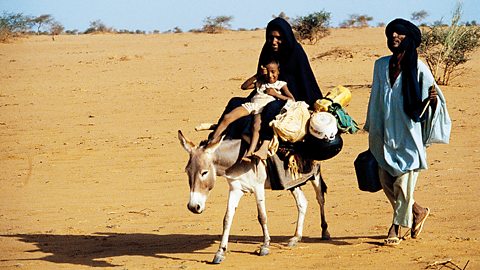
- count5 of 5
